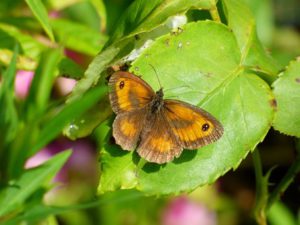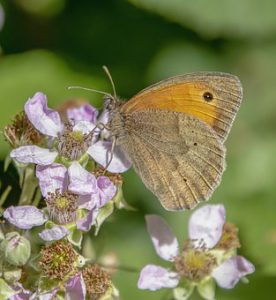Meadow Brown Butterfly care tips

History of the meadow brown butterfly
The meadow brown butterfly is widespread and can be found in places such as Europe, North Africa, Iran, Asia Minor, the Canary Islands, Iraq, and Russia. These butterflies can be found mostly in Scotland congregating wherever there are patches of native grasses that are overgrown. The meadow brown can be easily spotted by the eyespots that are on their wings.
Orange patches can be found on the forewings only, one eyespot on the forewing, and none on the hindwings. They can be seen flying low over vegetation. It’s been discovered that the markings on their wings vary from region to region. Large colonies have been lost because of fields being overworked.
The meadow brown butterfly natural habitat
The meadow brown can be found in woodland clearings, hedgerows, Coastal dunes, tall grass growing in open areas that are warm (grasslands), roadside verges, cemeteries, heathland, and parks.
The life cycle of the meadow brown
The meadow brown butterfly is most active from late May through October, the female lays a single egg on the host plant (plants that the larva feeds off). The newly laid egg is pale yellow but as the egg matures develops brown to red markings.
The caterpillar hatches in about 2-3 weeks, as the caterpillar matures it takes on a light green color with subspiracular line that is pale. When the caterpillar is fully mature it turns from light to dark green.
The caterpillar at this stage will molt 5 times before it moves to the next stage, during weathers that are mild the caterpillar will overwinter down low in tall grasses.
At night time they actively feed, when the caterpillar is full-grown it suspends itself from a stem on a silk pad that is secured by its anal claspers. The chrysalis which is the final stage in 3-4 weeks gives way to a beautiful butterfly.
Attracting the meadow brown to your garden
1. To attract the meadow brown to your garden install grasses such as Downy oat-grass, False brome, fescue, Cock’s foot, bents, etc…
2. Install plants in areas that get full sunlight.
3. Place mulch around plants for these benefits.
4. Provide a water source by filling a shallow dish with water.
5. Add several medium-size rocks for butterflies to rest.
12 fun facts about the meadow brown
1. The male meadow is more active than the female.
2. The female is lighter and brighter in color.

3. These butterflies are most common throughout the summer months.
4. Eyespots can be found on the hindwing underside.
5. They produce 1 generation per year.
6. It’s believed that the meadow brown butterfly shoots venom which can cause hallucinations.
7. The eggs are not only laid on the host plant but is also drop when the female is in flight.
8. The males are much more active than the female.
9. The male meadow brown will attack if its mate is being threatened.
10. There are several species of these butterflies.
11. The male is slightly smaller than the female.
12. In some areas, hundreds of these butterflies can be seen congregating.
Additional information on the meadow brown
1. Don’t squash caterpillars which may be the larva stage of the meadow brown butterfly.
2. Don’t use harmful chemicals that can kill the meadow brown butterfly and its larva.
3. Release beneficial insects into your garden or install plants that will attract them.
4. Water plants at the ground or soil level that will safeguard against knocking the larva of the leaves.
5. Install grasses in masses.
6. Tall grasses will act as a shelter or hiding place.
The final word on the meadow brown butterfly
The meadow brown butterfly has made a name for its self, these garden beauties are so graceful and would love a place in your home garden so go ahead and create a garden for them that says home sweet home.
About the author
Norman loves being in the garden, both at home and for his job....
he is 'Natures Little helper' being outdoors, growing his vegetables and flowers from an early age.
Now having spent over 22 years in the profession he want to give some of his knowledge to others...
his vast array of hints and tips you will find scattered over this site will help you no end growing plants in your garden.

Great post! I am actually looking to build my own garden soon, kind of like a greenhouse or an indoor garden. I am hoping that butterflies would naturally flock my garden, as it would be a great way to relax and just watch them flutter on about. This article really gave me some ideas on how to properly take care of these beautiful insects. Thank you for sharing!
`Hello so happy to help, creating a garden is so good because this way we get to connect with nature in the most awesome way. Wishing you much success with your garden project.
I’ve always found interest in the lifecycles of butterflies, or any organism that undergoes metamorphosis. This butterfly is no exception and I love the fact sheet you attached regarding them. It’s a cool fact that they’re believed to shoot hallucinating venom – if that’s the case I don’t want to be on the receiving end of it! But I love their aesthetics, especially the eye-marks which really gives this butterfly a unique look. I can definitely see why gardeners would want to attract them to their gardens.
This specie of butterfly is so amazing and it is so good to provide a home for them in our gardens. This is one of the many exciting features that make gardening so amazing. So happy That I can help, all the best to you and have a good day.